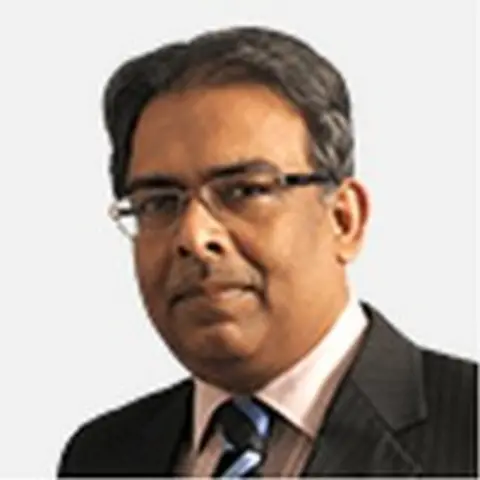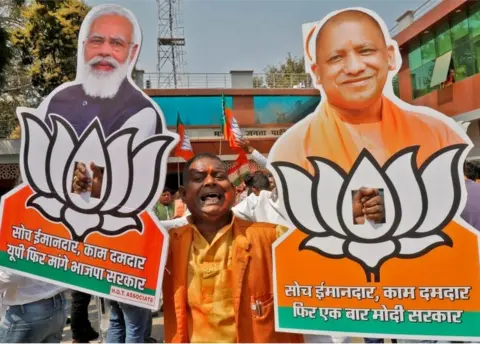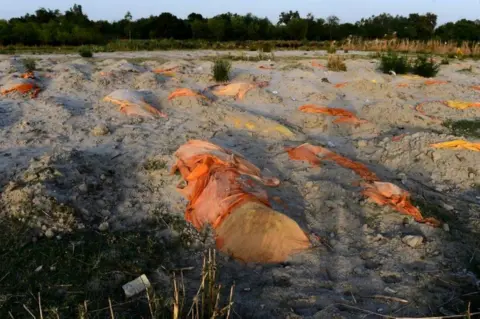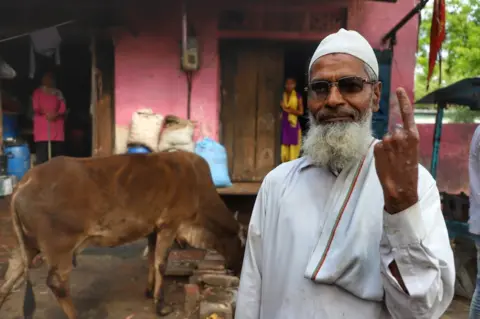Uttar Pradesh elections: What a historic poll win says about Modi's India

 AFP
AFPThe fabled power of anti-incumbency was expected to pose a challenge to Narendra Modi's governing Bharatiya Janata Party (BJP) in the world's largest local election - 150 million voters spread over more than 400 seats - in India's northern Uttar Pradesh or UP state.
After all, no party had managed to retain its majority in the state's legislative assembly since 1985.
The average tenure of a chief minister during a five-year-term in this politically volatile state has been two years and 19 days. No incumbent chief minister has ruled UP for two successive terms since 1947.
Mr Modi's party and its current UP chief minister Yogi Adityanath have now bucked that trend.
Uttar Pradesh remains direly poor - the nominal GDP per person is less than 1,000 dollars - and is deeply divided on the basis of caste and, now, religion.
It had begun to look grim for even Mr Modi's powerful party, which swept the last election in 2017, winning 303 of 403 seats.
Overall things appeared to be a bit bleak. A poll by India Today magazine in August last year found that inflation, lack of jobs and the handling of the pandemic were the single biggest failures of Mr Modi's government.
In January, barely a month before the elections, a clutch of BJP legislators in UP defected to its main rival, the regional Samajwadi Party. Critics painted Mr Adityanath as an autocratic, casteist and remote leader.
Yet, the Hindu nationalist party, helped amply by Mr Modi's rhetoric and charisma, romped home on Thursday, defying predictions by even some of its more sceptical supporters. (On the stump, Mr Modi spoke about the benefits of a "double-engine" government where state and national governments are ruled by the same party.)
How did this happen? As usual, voters have made their choices based on a range of variables.
Indian voters are strongly ideological: Hindu voters cutting across caste divisions have again backed the BJP to the hilt.
 Getty Images
Getty ImagesRemember this is happening in a state where one in five voters is a Muslim and the party has not fielded a single Muslim candidate in any state or federal elections since 2014. Muslims are thought to have overwhelmingly backed the Samajwadi Party, whose improved performance was not enough to beat the BJP.
"There is a massive consolidation of Hindu votes in response to a perceived Muslim consolidation. This works to BJP's advantage," says Nalin Mehta, author of The New BJP, a book on the evolution of the party.
This means that states with a significant Muslim population where the BJP is present will see bipolar politics - this has happened in Bihar, West Bengal, and now, UP.
Most importantly, the BJP has managed to anchor the support of a wide-ranging and inclusive Hindu caste coalition, which it put together in 2014, triggering a political and social realignment in Indian politics.
This coalition includes an array of the "other backward classes" or OBCs, a group of myriad middle-ranking castes who are disadvantaged compared to upper castes.
The BJP has put leaders belonging to this group at every level of the party's organisation in the state. Nearly 70% of BJP MPs in June 2020 belonged to castes considered to be lower down in the Hindu caste hierarchy.
In doing so, the Hindu nationalist party has successfully shed its reputation as a predominantly urban party of the privileged upper castes and recast itself as a party of both the city and the village. "What Mr Modi has done with caste on the ground in UP has broken new ground. It has actually created a new leadership," Mr Mehta says.
Welfare benefits - homes, toilets, cooking gas, food rations during the pandemic lockdown and modest cash handouts through direct bank transfers - also helped BJP build trust with voters. Mr Adityanath's rabble-rousing politics and strong-arm rule - surveys have found that a substantial number of Indians prefer strong leaders - also appears to have resonated with voters.
For a subnational election, the results in Uttar Pradesh have significant implications for Indian politics.
 Getty Images
Getty ImagesFor one, this win tightens the BJP's grip on power, deflates a splintered opposition and places the party well ahead in the race to win a third term in the 2024 parliamentary election. "Winning UP with this kind of majority will give further fillip to the idea that BJP is the most powerful party in India. This will demoralise the opposition," Rahul Verma, a political scientist, says.
Second, the win emboldens the BJP to push ahead with its successful strategy of combining strident Hindu nationalism with strategic welfarism to woo voters. Yamini Aiyar, chief executive of the Centre for Policy Research, a think tank, calls it the mixing of "left-wing populism in favour of the poor with right wing cultural majoritarianism".
Third, the win firmly establishes Mr Adityanath as a mass leader in India's most politically significant state.
"[By] fusing religion and politics and combining it with a strong-arm rule, Mr Adityanath has pushed regional authoritarianism much further than any other Indian leader. He is a Hindu mascot that the BJP can use to provide a certain kind of governance that other BJP chief ministers can emulate," says Gilles Verniers, a professor of political science at Ashoka University.
Yet, it might be a mistake to overread BJP's resounding win as a guaranteed re-election in the battle for national power in 2024.
Undoubtedly the party has a wide and well-knit grassroots network, unmatched resources and a largely uncritical media on its side. But with the war in Ukraine putting further pressure on prices and likely to squeeze budgets, the BJP is likely to face headwinds going ahead. Neelanjan Sircar, a political scientist, describes the economic crisis as an "emerging axis of electoral conflict".
The BJP had not been faring well in state elections since 2019. The party leads the government by itself or as a senior coalition partner in 12 of India's 29 states. It is part of the government in four others. On Thursday, the party retained four states, including UP, in what is clearly a major boost.
The near decimation of the main opposition Congress party means that in the 250-odd parliamentary seats in northern and western India, the BJP will continue to dominate. And that alone puts Mr Modi in pole position for a third term in 2024.
